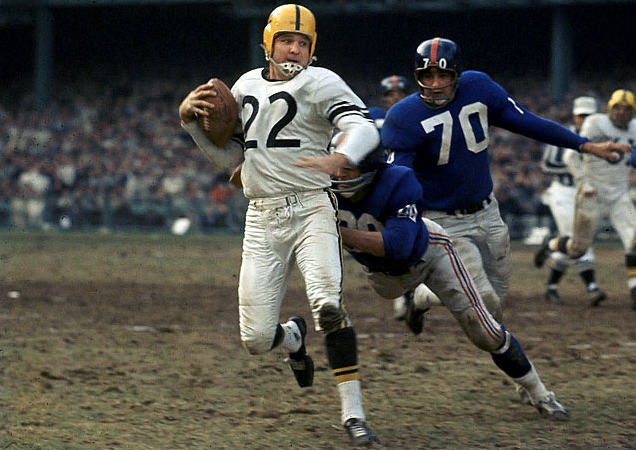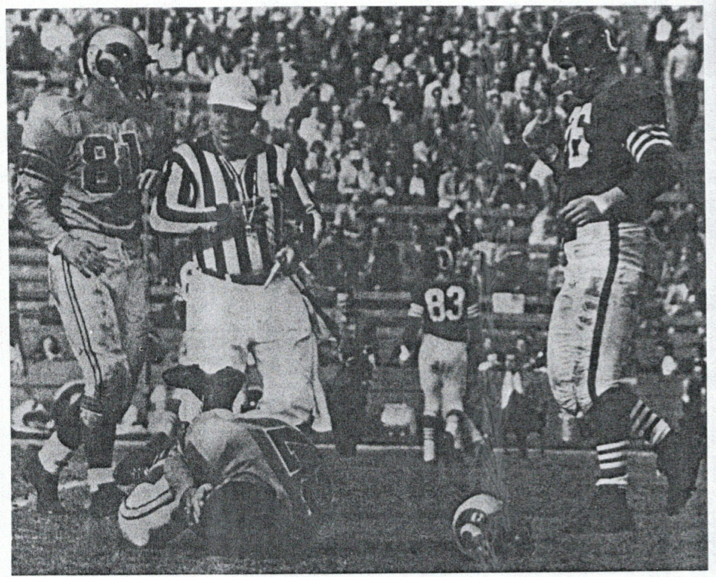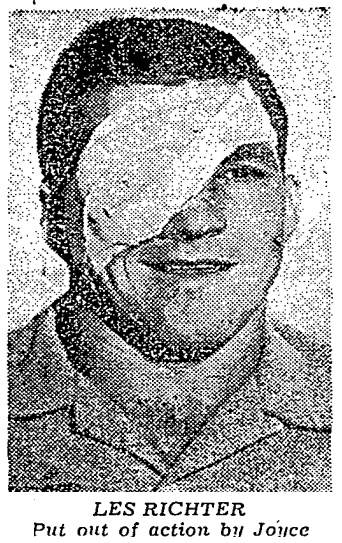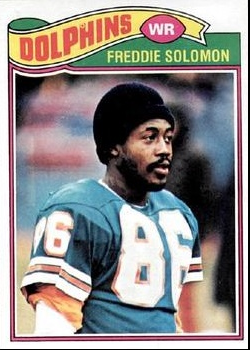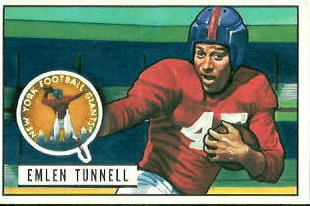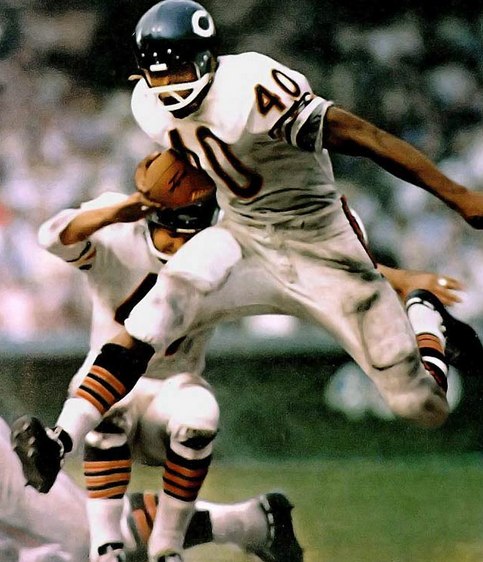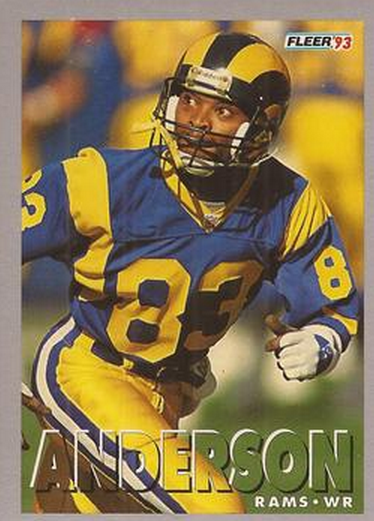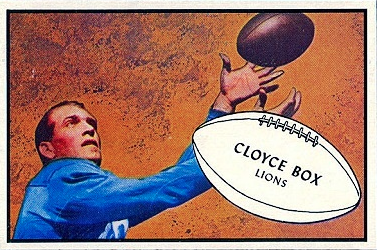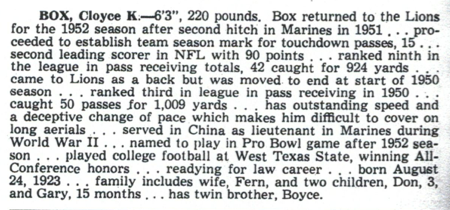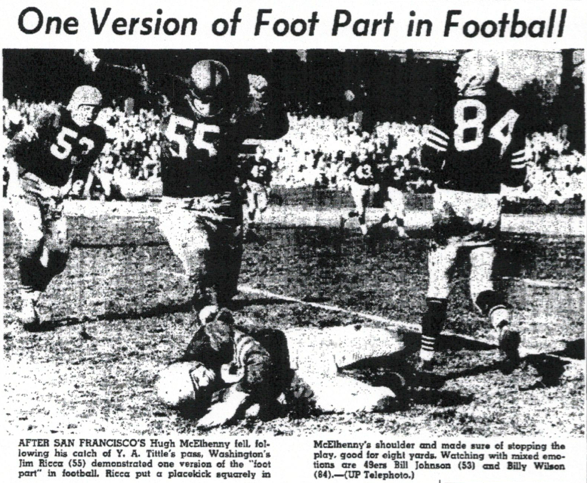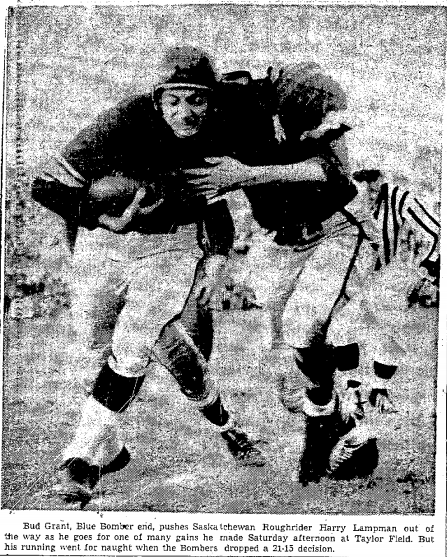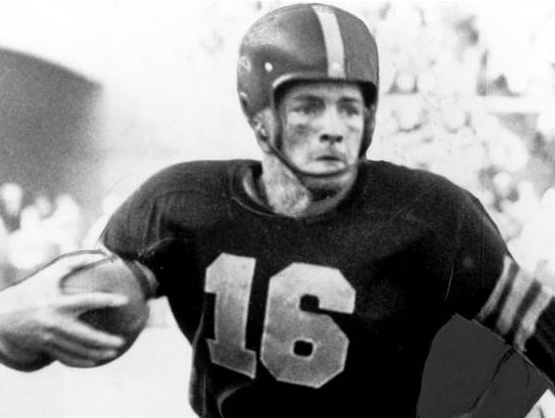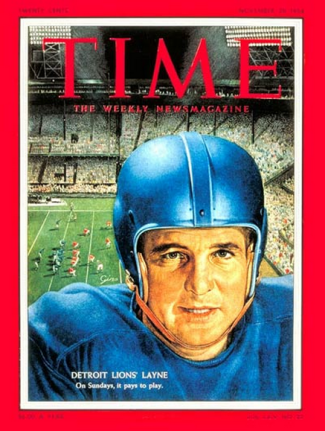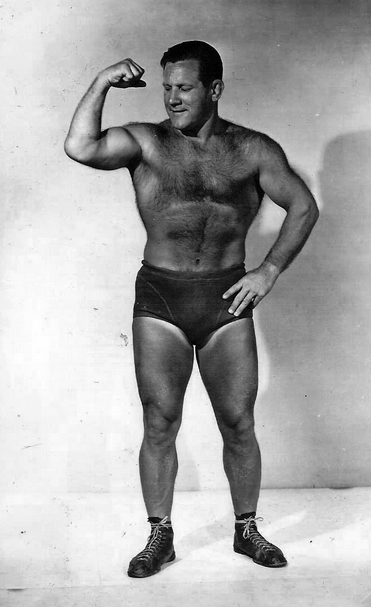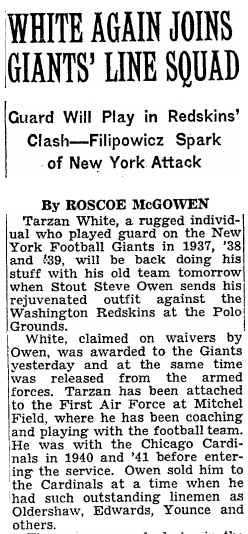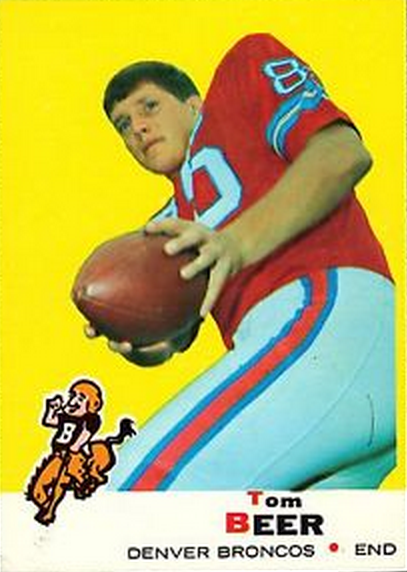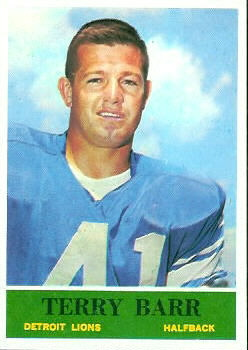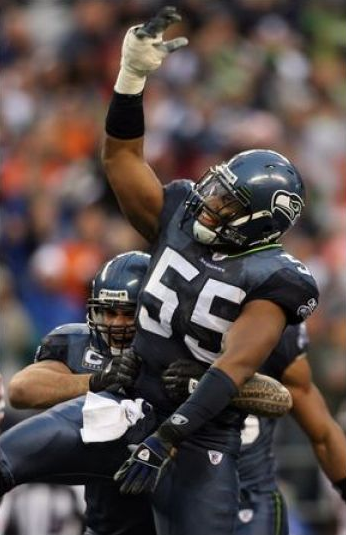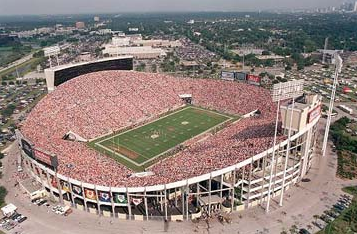Late in Sunday night’s game, with the Seahawks on their way to 596 yards, NBC informed us it had been 56 years since the Cardinals had allowed so many. You’d have to go all the way back, the graphic on the screen said, to their 1958 season finale in Pittsburgh, when they were Chicago Cardinals and the Steelers played at Pitt Stadium.
Bobby Layne and Co. racked up 683 yards that frigid December day — 472 passing, 211 rushing. It was so ridiculous that a running back, Tom “The Bomb” Tracy, threw a 72-yard touchdown pass. But here’s the best part, the part no one remembers: Layne played with a wicked hangover. World class. On national television, no less.
“Bobby drank, no doubt about that,” Art Rooney says in Ray Didinger’s book, Pittsburgh Steelers.
“The greatest day Layne ever had with the Steelers came the last day of one season at Pitt Stadium against the Cardinals. It was snowing like crazy. There couldn’t have been more than 5,000 people at the game because you had to be an athlete to get up the hill to that park on a dry day, let alone in snow and ice.
“Well, anyway, Bob Drum [a local sportswriter] came in the press box and said, ‘Your quarterback’s not gonna make it today.’ I knew what Drum meant because he and Layne were running mates around town at night. I said, ‘Don’t worry, he’ll be here.’
“Drum said, ‘I’m telling you, I was with him last night, and there’s no way he’ll even make it to the ballpark, let alone play.’
“This was unusual for Bobby, but it was the last game of the season, and he was blowing off steam. Bobby showed up at the stadium, and he looked awful. Well, Bobby went out and had himself a day you had to see to believe. The footing on the field was so bad everybody on both sides was falling down except Bobby. He was staggering all over the field and picking up unbelievable yardage. I never saw him have another day like it.”
Layne never did have another day like it. His 409 passing yards were the high for his 15-year Hall of Fame career. Indeed, it was just the eighth time an NFL quarterback had thrown for 400. (Layne also ran 17 yards for a score. That might have been his “staggering all over the field” moment.)
“Darkness almost overtook the athletes in the longest pro game ever played here,” Jack Sell wrote in the Pittsburgh Post-Gazette. “It required 2:57 and took up 213 plays, 54 in the first period, 61 in the second, 60 in the third and 38 in the fourth.”
(The “213 plays” seems off. I count 93 snaps for the Steelers, 60 for the Cardinals, plus 15 penalties, 11 kickoffs, 6 punts and 2 sacks – a max of 187. Which raises the question: Was Sell out drinking with Layne and Drum, too?)
More from his story:
The season’s farewell ran exactly as Coach Frank (Pop) Ivy of the Cardinals predicted on Friday afternoon. He took his squad to the snow-covered Pitt practice field for a tune-up, then visited the stadium where workmen had removed the tarpaulin and were using a flame thrower to remove icy spots.
Ivy asked Horse Czarniecki to keep the tarp off the grid Friday night [the Steelers and Cardinals played on Saturday], a request which was refused.
“If it snows we will at least be able to get a bit of traction,” Ivy insisted. “But on that skating rink my team will never be able to stop Bobby Layne’s long passes.”
It turned out they couldn’t.
So take heart, Arizona Cardinals. You may have given up 596 yards Sunday night, the most you’ve allowed in nearly six decades, but at least you weren’t victimized by a hung-over quarterback. The Seahawks’ Russell Wilson seemed in complete command of his faculties in the postgame interviews. Happy? Sure. But in a non-alcoholic, I-could-pass-any-breathalyzer-test kind of way.

